MaryAnn Bernal's Blog, page 176
May 18, 2015
History Trivia - Crusaders abandon Tyre
May 18,
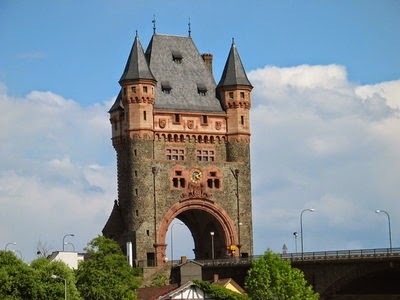
1096 Crusaders massacred Jews of Worms, Germany.
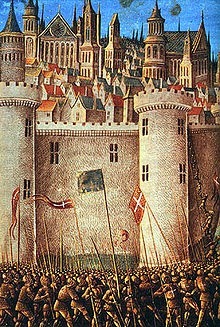
1268 The Principality of Antioch, a crusader state, fell to the Mamluk Sultan Baibars in the Battle of Antioch.

1291 the Crusaders abandoned Tyre to the Moslems, the prelude to the end of the final Crusade.

1096 Crusaders massacred Jews of Worms, Germany.

1268 The Principality of Antioch, a crusader state, fell to the Mamluk Sultan Baibars in the Battle of Antioch.

1291 the Crusaders abandoned Tyre to the Moslems, the prelude to the end of the final Crusade.
Published on May 18, 2015 01:30
May 17, 2015
Long Lost Egyptian Temple Found
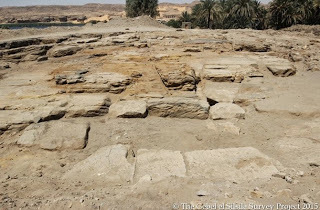 A general overview of the temple. The Gebel el Silsila Survey Project 2015Discovery News
A general overview of the temple. The Gebel el Silsila Survey Project 2015Discovery NewsRemains of the long lost temple of Kheny have been unearthed at Gebel el Silsila, north of Aswan, Egypt’s Minister of Antiquities announced today.
Revealing the foundations and blockwork of the temple, the ruins are one of the few remnants of the settlement of Kheny or Khenu, which is the ancient Egyptian name — meaning “Rowing Place” — for Gebel el-Silsila.
Lost Egyptian Temple Ruins Unearthed: PhotosThe site, located on both banks of the Nile between Edfu and Kom Ombo, was extensively used as a quarry from the New Kingdom until Roman times.
“We know that huge quantities of sandstone for temple building were quarried there,” Lund University archaeologist Maria Nilsson, director of the Gebel el Silsila Survey Project, told Discovery News.
Indeed, virtually all of Egypt’s great temples, including those at Karnak and Luxor, were built with sandstone from Gebel el Silsila.
“Now this finding changes the history of the site, and it firmly establishes Gebel el Silsila as not only a quarry, but also a sacred location,” she added.
While cult activities at the site were mainly associated with the Nile and its inundation, the principal deity was Sobek, the god of crocodiles who controlled the waters.
“At the moment we do not know to whom the temple was dedicated,” Nilsson said.
“We believe it marked the beginning of the east bank quarries. We hope further archaeological work and research will reveal more,” she added.
Photos: Egyptian Pharaoh Carved in QuarryNilsson and associate director John Ward have been working at Gebel el-Silsila since 2012, unearthing cartouches for Amenhotep III and Ramses II as well as hundreds of rock inscriptions.
The temple remains were recorded somewhere between 1906 and 1925 and described as a destroyed Ramesside temple in a map published by German Egyptologist Ludwig Borchardt in 1934. The temple was then forgotten.
Nilsson and John Ward located its remains by studying Borchardt’s rudimentary map along with an unpublished plan drawing by Egyptologist Peter Lacovara, curator at the M. C. Carlos Museum in Emory University.
They found foundations measuring approximately 115 feet by 60 feet. Blockwork included four visible dressed floor levels, column bases, inner and outer walls.
While obvious marks on the ground refer to five columns bases in the west side of the building, two painted sandstone fragments featuring the Egyptian star and sky indicate the temple boasted a starred ceiling.
Mummy-Making Began Long Before Pharaohs
According to Nilsson and Ward, the remains reveal evidence for at least four chronological periods, spanning about 1500 years, from the reigns of Thutmosis/Hatshepsut, Amenhotep III, Ramses II to Roman times.
“The oldest building phase of the temple was made up by limestone, which is unique within a sandstone quarry, and may signify the official changeover from limestone construction to sandstone,” Nilsson said.The archaeologists unearthed hundreds of decorated and painted blockwork, and over 300 decorated limestone fragments which showed iconography characteristic to the early Thutmosid period (1500-1450 BC). Hieroglyphic text mentioned the name of the site, Kheny.
“The limestone scenes had been destroyed during antiquity to be reused as foundation filling together with sand and pebbles for a later construction phase. A square decorated limestone base was still intact,” Nilsson said.
New Pharaoh Found in Egypt: Photos
Almost 300 raised and sunken painted relief fragments included the cartouches of two later rulers – Amenhotep III and Ramses II, providing evidence for two later temple phases. A fourth chronological period was testified by late Ptolemaic and early Roman storage activity.
In the temple area, the archaeologists also found 18th Dynasty beads, coloured plaster, faience sherds, thousands of pot sherds, and a blue-coloured scarab possibly dating to the 2nd Intermediate Period.
According to the archaeologists, further research is required to better understand the temple’s role and importance.
“We hope to continue the archaeological work on site, especially as its state of preservation is so poor and requires immediate documentation before it is too late,” Nilsson said.
Published on May 17, 2015 10:29
History Trivia - Anne of Denmark crowned Queen of Scotland
May 17,

1220 King Henry III of England Crowned for a second time. Henry, who had been crowned at age nine four years earlier, underwent a second coronation at Westminster.
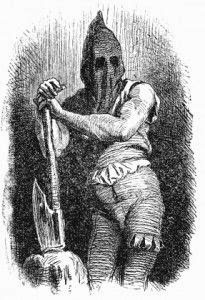
1536 George Boleyn, Viscount Rochford and four other men were executed for treason.

1590 Anne of Denmark was crowned Queen of Scotland.

1220 King Henry III of England Crowned for a second time. Henry, who had been crowned at age nine four years earlier, underwent a second coronation at Westminster.

1536 George Boleyn, Viscount Rochford and four other men were executed for treason.

1590 Anne of Denmark was crowned Queen of Scotland.
Published on May 17, 2015 00:30
May 16, 2015
Brenda Perlin Is This Week’s Flash Fiction Winner
 Indies Unlimited
Indies UnlimitedCongratulations to Brenda Perlin whose entry won this week’s Indies Unlimited Flash Fiction Challenge.
The voter-selected story is recognized with a special feature here today and wins a place in our 2015 Flash Fiction Anthology, which will be published as an eBook when this year’s challenges are completed.
Without further ado, here’s the winning story
Mother’s Day
by Brenda Perlin
Walking out of the bakery, with her young daughter in hand, Andrea felt broken. That crumbled Mother’s Day cookie she just bought reminded her how screwed up her life had become.
“Andrea, let’s get a move on it,” Bruce screeched from the sidewalk.
“Okay, okay. What’s the big deal if we miss a few minutes of the game? ”Picking up her little girl she felt moisture filling her eyes, but she did everything in her power to stop the tears from flowing. She would not cry, she told herself.
Living with Bruce was no longer making her happy. In fact, at that moment, she couldn’t remember a time her husband had ever made her happy, but she had Chloe to consider, and she knew divorce was hard on children. Still, the thought of living one more day with this man made her stomach turn.
“What are you waiting for?” Bruce yelled while he climbed into the Volvo. Andrea stood in the middle of the parking lot, not concerned that she was blocking traffic. She put Chloe down and asked her to get into the car.
“But aren’t you coming?” Shhh, honey. Just do as mommy says and go home with daddy. The child did as she was told and before Bruce had a chance to see her wander away, she had already slipped around the corner feeling freer than she had in years.
Published on May 16, 2015 07:34
Vikings Traded First (Then Plundered), Study Suggests
Live Science

 A medieval comb fashioned out of a reindeer antler.
A medieval comb fashioned out of a reindeer antler.
Credit: Ross Docherty View full size image
The Viking Age may not have started with the plundering of England, but with the peaceful trading of handcrafted combs made out of reindeer antlers, a new study suggests.
of handcrafted combs made out of reindeer antlers, a new study suggests.
Until now, researchers thought the Viking Age began in June 793, when Norwegian Vikings raided Lindisfarne, an island off the northeast coast of England. But new research suggests Vikings were traveling from Norway to Ribe, one of Scandinavia's earliest towns and a lively trading center on the west coast of Denmark, as early as 725, the researchers said.
suggests Vikings were traveling from Norway to Ribe, one of Scandinavia's earliest towns and a lively trading center on the west coast of Denmark, as early as 725, the researchers said.
In fact, the bustling mercantile town may have given the Vikings an economic incentive to sail south to Denmark, the researchers said. And, coincidently, these types of travels likely helped the Vikings refine and master the boating and navigational skills that helped them explore (and plunder) countries near and far, they added. [Fierce Fighters: 7 Secrets of Viking Seamen]
"This shows us that merchants and other travelers from the north were visiting Ribe long before the start of the Viking Age as we know it," the study's lead researcher, Steve Ashby, a lecturer of medieval archaeology at the University of York in the United Kingdom, said in a statement. "Even in its early stages, the town was attracting visitors from afar. We have long wondered whether Ribe, and places like it, kick-started the Viking expansion in trade , travel and warfare, but it has been difficult to prove."
, travel and warfare, but it has been difficult to prove."
To learn more, the researchers studied antler combs and fragments at the archaeological site of Ribe's medieval marketplace. They used a biomolecular method called Zooarchaeology by Mass Spectrometry (ZooMS) to identify the species of deer that grew the antlers used in the crafts, the researchers said.
ZooMS works by analyzing fragments in collagen, a protein found in skin and connective tissues. After each sample is examined, the researchers can compare them with reference sequences from other animals in a database, they said.
The study showed that reindeer, which are not local to Denmark, made up a number of the crafts. Reindeer did live in Norway during that time, and it's likely the Vikings brought the antlers to Denmark to trade with their neighbors, the researchers said.
"Now for the first time, we can confidently say that people in the more remote parts of Scandinavia were visiting places like Ribe, presumably for commercial gain, from a very early stage," Ashby said. "It’s a vital contribution to the question of what caused the Viking Age: It looks as though towns and maritime trade may have been the engine driving all this change."
to the question of what caused the Viking Age: It looks as though towns and maritime trade may have been the engine driving all this change."
In fact, combs fashioned out of deer antlers were a sizable industry during the Viking Age, which lasted until the Norman Conquest of England in 1066. It's likely that the early Norwegian Vikings had access to vast amounts of reindeer antlers, the researches said. [In Photos: Viking Voyage Discovered]
Reindeer live in large herds, and shed their antlers in the open tundra, making them easy to collect, the researchers said. Once the early Vikings had enough antlers, they likely sold them to artisans in southern Scandinavia, who crafted them into combs, they added.
Other studies have found that "finds in graves suggest that a considerable proportion of the Scandinavian population" had reindeer antler combs, which served as a hygienic and aesthetic amenity, the researchers wrote in the study.
While the Vikings were aggressive, they were also highly skilled in their seafaring travels, said study co-author, Søren Sindbæk a professor of medieval and renaissance archaeology at Aarhus University in Denmark.
"The Viking Age becomes a phenomenon in Western Europe because the Vikings learned to use maritime mobilityto their advantage," Sindbæk said. "They learned to master sailing to such an extent that they get to the coast of England where the locals don't expect anything. They come quickly, plunder the unprepared victims, and leave again — a sort of hit and run."
But the antler combs suggest the Vikings should also be remembered as resourceful traders .
.
"The peaceful exchanges — trading — will take up more of the story, and the military voyages, which are also important, must now share the space," Sindbæk said.
The findings were published online April 1 in the European Journal of Archaeology.

 A medieval comb fashioned out of a reindeer antler.
A medieval comb fashioned out of a reindeer antler.Credit: Ross Docherty View full size image
The Viking Age may not have started with the plundering of England, but with the peaceful trading
 of handcrafted combs made out of reindeer antlers, a new study suggests.
of handcrafted combs made out of reindeer antlers, a new study suggests.Until now, researchers thought the Viking Age began in June 793, when Norwegian Vikings raided Lindisfarne, an island off the northeast coast of England. But new research
 suggests Vikings were traveling from Norway to Ribe, one of Scandinavia's earliest towns and a lively trading center on the west coast of Denmark, as early as 725, the researchers said.
suggests Vikings were traveling from Norway to Ribe, one of Scandinavia's earliest towns and a lively trading center on the west coast of Denmark, as early as 725, the researchers said.In fact, the bustling mercantile town may have given the Vikings an economic incentive to sail south to Denmark, the researchers said. And, coincidently, these types of travels likely helped the Vikings refine and master the boating and navigational skills that helped them explore (and plunder) countries near and far, they added. [Fierce Fighters: 7 Secrets of Viking Seamen]
"This shows us that merchants and other travelers from the north were visiting Ribe long before the start of the Viking Age as we know it," the study's lead researcher, Steve Ashby, a lecturer of medieval archaeology at the University of York in the United Kingdom, said in a statement. "Even in its early stages, the town was attracting visitors from afar. We have long wondered whether Ribe, and places like it, kick-started the Viking expansion in trade
 , travel and warfare, but it has been difficult to prove."
, travel and warfare, but it has been difficult to prove."To learn more, the researchers studied antler combs and fragments at the archaeological site of Ribe's medieval marketplace. They used a biomolecular method called Zooarchaeology by Mass Spectrometry (ZooMS) to identify the species of deer that grew the antlers used in the crafts, the researchers said.
ZooMS works by analyzing fragments in collagen, a protein found in skin and connective tissues. After each sample is examined, the researchers can compare them with reference sequences from other animals in a database, they said.
The study showed that reindeer, which are not local to Denmark, made up a number of the crafts. Reindeer did live in Norway during that time, and it's likely the Vikings brought the antlers to Denmark to trade with their neighbors, the researchers said.
"Now for the first time, we can confidently say that people in the more remote parts of Scandinavia were visiting places like Ribe, presumably for commercial gain, from a very early stage," Ashby said. "It’s a vital contribution
 to the question of what caused the Viking Age: It looks as though towns and maritime trade may have been the engine driving all this change."
to the question of what caused the Viking Age: It looks as though towns and maritime trade may have been the engine driving all this change."In fact, combs fashioned out of deer antlers were a sizable industry during the Viking Age, which lasted until the Norman Conquest of England in 1066. It's likely that the early Norwegian Vikings had access to vast amounts of reindeer antlers, the researches said. [In Photos: Viking Voyage Discovered]
Reindeer live in large herds, and shed their antlers in the open tundra, making them easy to collect, the researchers said. Once the early Vikings had enough antlers, they likely sold them to artisans in southern Scandinavia, who crafted them into combs, they added.
Other studies have found that "finds in graves suggest that a considerable proportion of the Scandinavian population" had reindeer antler combs, which served as a hygienic and aesthetic amenity, the researchers wrote in the study.
While the Vikings were aggressive, they were also highly skilled in their seafaring travels, said study co-author, Søren Sindbæk a professor of medieval and renaissance archaeology at Aarhus University in Denmark.
"The Viking Age becomes a phenomenon in Western Europe because the Vikings learned to use maritime mobilityto their advantage," Sindbæk said. "They learned to master sailing to such an extent that they get to the coast of England where the locals don't expect anything. They come quickly, plunder the unprepared victims, and leave again — a sort of hit and run."
But the antler combs suggest the Vikings should also be remembered as resourceful traders
 .
."The peaceful exchanges — trading — will take up more of the story, and the military voyages, which are also important, must now share the space," Sindbæk said.
The findings were published online April 1 in the European Journal of Archaeology.
Published on May 16, 2015 07:25
History Trivia - Eleanor of Aquitaine marries Henry Anjou
May 16,
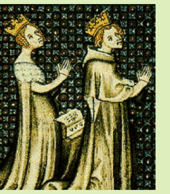
1152 Eleanor of Aquitaine married Henry Anjou.

1532 Sir Thomas More resigned as Lord Chancellor of England.

1568 Mary, Queen of Scots, fled to England.

1152 Eleanor of Aquitaine married Henry Anjou.

1532 Sir Thomas More resigned as Lord Chancellor of England.

1568 Mary, Queen of Scots, fled to England.
Published on May 16, 2015 01:30
May 15, 2015
History Trivia - Anne Boleyn and Lord Rochford on trial for adultry
May 15,
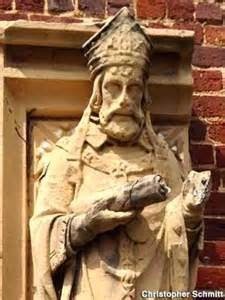
1213 King John named Stephen Langton Archbishop of Canterbury after submitting to the Pope's authority and offering to make England and Ireland papal fiefs, which resulted in Pope Innocent III lifting the interdict of 1208.
153 6 Anne Boleyn and Lord Rochford stood trial on the charges of adultery/incest.
6 Anne Boleyn and Lord Rochford stood trial on the charges of adultery/incest.

1567 Mary, Queen of Scots, married James Hepburn, 4th Earl of Bothwell, her third husband.

1213 King John named Stephen Langton Archbishop of Canterbury after submitting to the Pope's authority and offering to make England and Ireland papal fiefs, which resulted in Pope Innocent III lifting the interdict of 1208.
153
 6 Anne Boleyn and Lord Rochford stood trial on the charges of adultery/incest.
6 Anne Boleyn and Lord Rochford stood trial on the charges of adultery/incest.
1567 Mary, Queen of Scots, married James Hepburn, 4th Earl of Bothwell, her third husband.
Published on May 15, 2015 01:30
May 14, 2015
Galaxies die by slow 'strangulation'
 Our own Milky Way and the nearby Andromeda (pictured) are both blue, star-forming galaxies BBC News
Our own Milky Way and the nearby Andromeda (pictured) are both blue, star-forming galaxies BBC NewsWhen galaxies stop making stars, their death is usually a slow process that chokes them of the necessary cool gases over about four billion years.That is the conclusion of astronomers who surveyed thousands of galaxies, living and dead, to assess whether the transition is rapid or slow.
In the dead galaxies they detected high levels of metals, which build up during star formation and point to a slow strangulation process.
The work appears in the journal Nature.
"Metals are a powerful tracer of the history of star formation: the more stars that are formed by a galaxy, the more metal content you'll see," said Dr Yingjie Peng from the University of Cambridge, the paper's lead author.
"So looking at levels of metals in dead galaxies should be able to tell us how they died."
If a galaxy's death was quick and violent, with the cool gas that feeds star formation stripped away by internal or external forces, it would immediately stop forming stars and its metal content would remain the same.
In essence, we know the cause of death, but we don't yet know who the murderer isDr Yingjie Peng, University of CambridgeOn the other hand, if the galaxy is cut off from its supply of gas but it continues to use up what remains, metal would continue to build up until the galaxy eventually "suffocates".
Slow way to goIn a commentary for Nature, fellow astronomer Andrea Cattaneo from the Observatoire de Paris compared this tell-tale evidence to the high levels of carbon dioxide seen in a strangled human body.
"During [strangulation], the victim uses up oxygen in the lungs but keeps producing carbon dioxide, which remains trapped in the body," wrote Dr Cattaneo.
"Instead of building up CO2, the strangled galaxies accumulate metals - elements heavier than helium - produced by massive stars."
The team led by Dr Peng spotted that accumulation of metal when they compared the spectrum of light emitted by 23,000 red, passive galaxies and 4,000 blue, star-forming ones.
They used data from the Sloan Digital Sky Survey - a vast collection of detailed, multi-coloured images spanning a third of the sky, which has been used to compile a precise 3D map of the universe.
 Red galaxies like NGC 2787 have seen the last of their star-forming days On average, the living, star-forming galaxies were four billion years younger than the dead ones. This matches the amount of time that the astronomers calculate would be needed for the galaxies to burn up their remaining gas supply during the strangulation.
Red galaxies like NGC 2787 have seen the last of their star-forming days On average, the living, star-forming galaxies were four billion years younger than the dead ones. This matches the amount of time that the astronomers calculate would be needed for the galaxies to burn up their remaining gas supply during the strangulation.It is also considerably longer than the four minutes it takes to strangle a human - but the analogy stands.
"This is the first conclusive evidence that galaxies are being strangled to death," Dr Peng said. "What's next though, is figuring out what's causing it. In essence, we know the cause of death, but we don't yet know who the murderer is, although there are a few suspects."
One of the likely culprits is overcrowding; if a galaxy is in a busy group or cluster, its collection of gas from from the surrounding environment might face disruption, commencing the strangulation process.
Within galactic clusters, the astronomers saw even more pronounced differences in metal content, which supports this idea.
For very big galaxies, which are relatively rare, the differences dwindle, suggesting that violent galactic deaths are more common at those extremes.
Published on May 14, 2015 08:21
Archaeologists piece together final moments of hundreds of Medieval Parisians
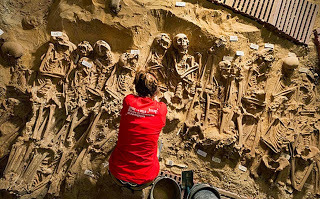 Ancient Origins
Ancient OriginsThe skeletons of more than 200 medieval Parisians have been moved for further study to a warehouse of the French National Institute for Preventive Archaeological Research in a suburb north of Paris, in order to unravel the mystery of their deaths.
A team from Inrap, as the institute is called, recently excavated the bodies after workers found them under the basement of a Monoprix supermarket in March. It is believed that the remains date from the 13th or 14th century AD.
“There are babies, there are young children, there are teenagers, there are adults, men, women, elderly people,” Isabelle Abadie, the lead archaeologist and anthropologist on the job, told The New York Times in an article of May 11, 2015. “This was a mortality crisis, that much is clear.”
The remains were excavated from the store's basement area near the medieval Hôpital de la Trinité, which closed during the French Revolution and then demolished in 1812. The Hôpital de la Trinité had once served as a shelter for the poor, a place for pilgrims and religious teachings, an infectious disease center and even a vocational school for children.
The skeletons are now in crates that contain hundreds of numbered plastic bags. Some of the bones have been washed with toothbrushes and water.
 Two of the bodies before exhumationThe team worked from March until early May exhuming the bodies from eight graves that covered more than 1,000 square feet (93 square meters). Some of the bodies were stacked five deep. In the main burial pit there were 175 bodies set head to toe. The bodies in the other graves were jumbled, possibly an indication of a rush to bury victims of an intensifying epidemic, The New York Times said.
Two of the bodies before exhumationThe team worked from March until early May exhuming the bodies from eight graves that covered more than 1,000 square feet (93 square meters). Some of the bodies were stacked five deep. In the main burial pit there were 175 bodies set head to toe. The bodies in the other graves were jumbled, possibly an indication of a rush to bury victims of an intensifying epidemic, The New York Times said.Scientists still have not done DNA and radiocarbon date testing. That may take months. But Abadie told the Times she knows they weren't victims of violence. “It could be the plague, it could be a famine, it can be many things at this stage — but there are no traces of trauma, so these aren’t deaths linked to an act of violence or war,” she said.
The burial site was the cemetery of the hospital from the 12th to the 17th centuries. Authorities thought the bodies had been moved in the 18th century to the Paris Catacombs. The catacombs house the bones of 6 million people transferred from Paris cemeteries 200 years ago.
 Bones in the Paris catacombs (Janericloebe/Wikimedia Commons)If the people did die of the plague, it was a common and grisly way to die at that time. The article titled ‘Black Death’ at Saylor.org says the plague killed an estimated 30 to 60 percent of Europe's population. By 1400 it reduced the world's population from an estimated 450 million to between 350 and 375 million.
Bones in the Paris catacombs (Janericloebe/Wikimedia Commons)If the people did die of the plague, it was a common and grisly way to die at that time. The article titled ‘Black Death’ at Saylor.org says the plague killed an estimated 30 to 60 percent of Europe's population. By 1400 it reduced the world's population from an estimated 450 million to between 350 and 375 million.“This has been seen as having created a series of religious, social and economic upheavals, which had profound effects on the course of European history. It took 150 years for Europe's population to recover. The plague returned at various times, killing more people, until it left Europe in the 19th century,” the Saylor.org site reports.
But if these people whose remains were just found this year died of plague, they went more quickly than if they experienced the slow-motion dying of starving to death in the event of famine.
Featured image: The scene at the supermarket, before the bones were removed (Denis Glikman/Inrap)
By Mark Miller
Published on May 14, 2015 08:15
Remnants of ancient necropolis excavated in Black Sea city in Turkey
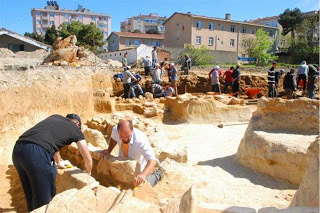 Ancient Origins
Ancient OriginsA necropolis is being excavated at a veritable crossroads of ancient civilizations, in Sinop, Turkey. Workers found remnants of the 4th century BC city of the dead while building a culture center in the ancient city on the Black Sea.
The necropolis dates to the 4th century BC, and many artifacts have been found, including amphorae, pottery, scent bottles and Greek coins.
Construction of the culture center has stopped while archaeologists excavate the necropolis, a word meaning “city of the dead.”
“We have also unearthed findings related to the Jewish faith in the west of the necropolis area. Works have been continuing,” said Sinop Museum Director Hüseyin Vura.
Sinop Governor Yasemin Özata Çetinkaya said finds like this are often made in Sinop as “the city is located on really historic land.”
 A sea wall in modern Sinop (Photo by Aramgar/
Wikimedia Commons
)“It is exciting that these valuables which have remained underground for 6,000 years are now being presented to humanity. When the excavations are done, the findings will be removed and the construction of the culture center will continue here. The findings will be displayed in the museum,” the governor said. “If it is approved, we can display these findings in an area in the culture center. Then the center will work as a natural museum. There are many examples of it in Turkey and the world. This is the most-preferred method.”
A sea wall in modern Sinop (Photo by Aramgar/
Wikimedia Commons
)“It is exciting that these valuables which have remained underground for 6,000 years are now being presented to humanity. When the excavations are done, the findings will be removed and the construction of the culture center will continue here. The findings will be displayed in the museum,” the governor said. “If it is approved, we can display these findings in an area in the culture center. Then the center will work as a natural museum. There are many examples of it in Turkey and the world. This is the most-preferred method.”Sinop has a rich history of Turkish, Greek, Hittite and other peoples.
“According to legend, Sinope was founded by the Amazons, who named it for their queen, Sinova,” writes the Encyclopedia Britannica. “The city’s ancient inhabitants ascribed its foundation to Autolycus, a companion of Hercules. Destroyed by the wandering Cimmerians, it was refounded toward the end of the 7th century bce by a colony of Milesians. It ultimately became the most flourishing Greek settlement on the Euxine (Black) Sea. As a terminus of the trade routes from Upper Mesopotamia, it commanded much of the maritime trade of the Pontic region and by the 5th century bce had established many colonies on the coast and enjoyed naval supremacy in the Black Sea. In 183 bce it was taken by Pharnaces I and became the capital of the Pontic kings. Under Mithradates VI Eupator, who was born there (as was the 4th-century-bce founder of the Cynic sect, Diogenes), it enjoyed a high degree of prosperity and was embellished with fine buildings, naval arsenals, and well-built harbors. The Roman general Lucius Licinius Lucullus captured the seaport in 70bce, and the city was nearly destroyed by fire.”Other ancient monuments and structures in Sinop include a ruined citadel that was reconstructed during the Seljuk and Byzantine eras, and from early Greece and Rome inscribed stones in walls and isolated columns
 Greek coins like this one of Pontus have been found in the necropolis (Photo by CNG Coins/
Wikimedia Commons
)Though people lived in the area long before recorded history, before the New Stone Age, scholars believe the city of Sinop was founded by Hittites, who gave it that name. From 1400 to 1200 BC the Hittites had one of the great civilizations, from Syria, to northern Mesopotamia to central Turkey.
Greek coins like this one of Pontus have been found in the necropolis (Photo by CNG Coins/
Wikimedia Commons
)Though people lived in the area long before recorded history, before the New Stone Age, scholars believe the city of Sinop was founded by Hittites, who gave it that name. From 1400 to 1200 BC the Hittites had one of the great civilizations, from Syria, to northern Mesopotamia to central Turkey. A ruin at the coast of Sinop (Photo by Michael F. Schonitzer/
Wikimedia Commons
)“Hittite culture survived in parts of Syria such as Carchemish which had once been under their power,” says the British Museum site. “These Neo-Hittites wrote Luwian, a language related to Hittite, using a hieroglyphic script. Many modern city names in Turkey are derived from their Hittite name, for example Sinop or Adana, showing the impact of Hittite culture in Anatolia.” Anatolia is another name for Asia Minor or western Turkey.
A ruin at the coast of Sinop (Photo by Michael F. Schonitzer/
Wikimedia Commons
)“Hittite culture survived in parts of Syria such as Carchemish which had once been under their power,” says the British Museum site. “These Neo-Hittites wrote Luwian, a language related to Hittite, using a hieroglyphic script. Many modern city names in Turkey are derived from their Hittite name, for example Sinop or Adana, showing the impact of Hittite culture in Anatolia.” Anatolia is another name for Asia Minor or western Turkey.Featured image: A necropolis was found under land upon which a new culture center is being built in Sinop. (Hurriyet Daily News photo)
Published on May 14, 2015 08:11



